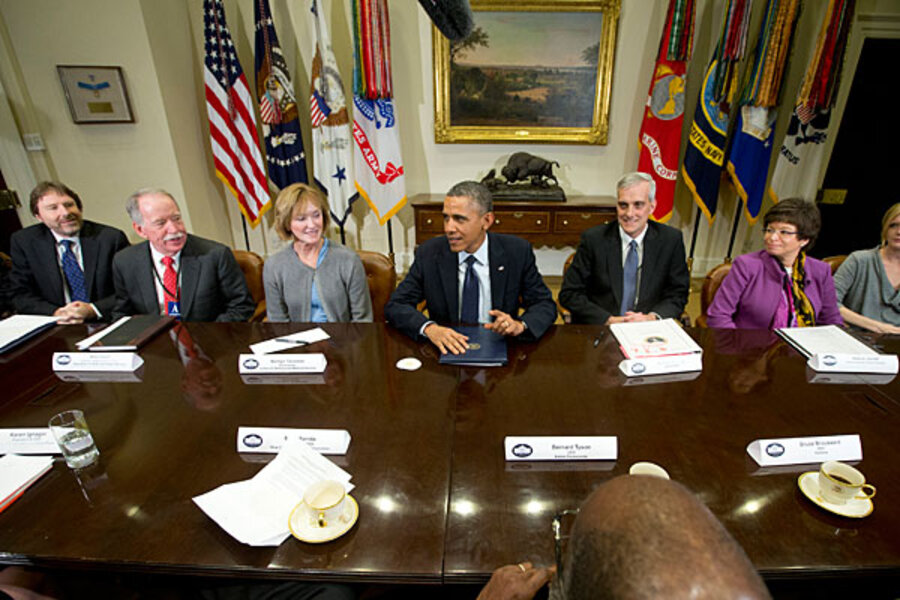Health inflation hits historic low. A victory for Obamacare?
Loading...
| Washington
Health care spending is growing at the slowest rate on record, and health-care price inflation is at its lowest rate in 50 years, according to a report released Wednesday by the White House’s Council of Economic Advisers.
Specifically, since 2010, the year the Affordable Care Act (ACA) passed, the growth of health-care spending has averaged an estimated 1.3 percent per year. And price inflation for health-care goods and services is running at just 1 percent, year-over-year, the lowest level since 1962.
Does the Affordable Care Act deserve credit? Council chairman Jason Furman suggests it does.
“While this marked slowdown likely has many causes, and these causes are not yet fully understood, the available evidence suggests that the ACA is contributing to these trends, and, moreover, is helping to improve quality of care for patients,” Mr. Furman writes on the White House blog.
The White House is eager to tout any good news it can find on health reform, as public approval of the ACA and Mr. Obama’s job approval have hit record lows. Enrollments on HealthCare.gov have picked up, but it’s far from certain that the site will be able to handle a wave of new traffic as the Dec. 15 deadline approaches for people who want their new insurance to start on Jan. 1.
But the White House report is also likely to spark debate among economists who study health-care inflation. An analysis published in April by the nonprofit Kaiser Family Foundation found that the record slow growth rate in health spending stemmed largely from “economic factors beyond the health system.” It attributed 77 percent of the health-inflation slowdown to the economy, and predicted more rapid growth in health spending in the years ahead, assuming the economy gains strength.
“The remaining 23 percent result from changes in the health care system, potentially including higher deductibles and other cost-sharing that dampen patients’ use of services, as well as various forms of managed care and delivery system changes,” the Kaiser report said.
In defense of its conclusions, the White House report notes that the slowdown in spending and price has persisted well beyond the end of the recession in June 2009.
“The evidence is clear that recent trends in health care spending and price growth reflect, at least in part, ongoing structural changes in the health care sector,” the report concludes.
The White House analysis comes amid a barrage of negative headlines over the ACA – the disastrous rollout of HealthCare.gov, the president’s unkeepable promise that consumers would be able to keep their health plans, and the emerging story line that many consumers will lose access to their doctor.
On Wednesday afternoon, President Obama meets with representatives of the National Association of Insurance Commissioners, following his announcement last week that he would allow insurers to let people keep their "substandard" plans for next year. Some state insurance regulators, including some in Democratic-leaning states, oppose the idea.
The White House report highlights provisions of the ACA that it says have brought down health costs, including the reduction of Medicare overpayments to providers and private insurers. The ACA also created an incentive to reduce hospital readmission rates and boosted the use of “accountable care organizations,” a payment and care model that ties reimbursements to outcomes.
The report cites research that shows the ACA’s Medicare reforms are likely to improve quality across the entire health-care system.
The report also notes factors unrelated to the ACA that are slowing growth in health spending. One is the rise in cost-sharing in employer plans, which gives patients an incentive not to use health services that aren’t essential. According to the Kaiser Family Foundation, the typical deductible in an employer plan has risen from $584 in 2006 to $1,135 in 2013.
Also, “blockbuster” drugs are coming off patent, which has produced a sharp increase in the use of generic drugs, another money-saver. Though the report notes that prescription drugs account for less than 10 percent of total health spending.








